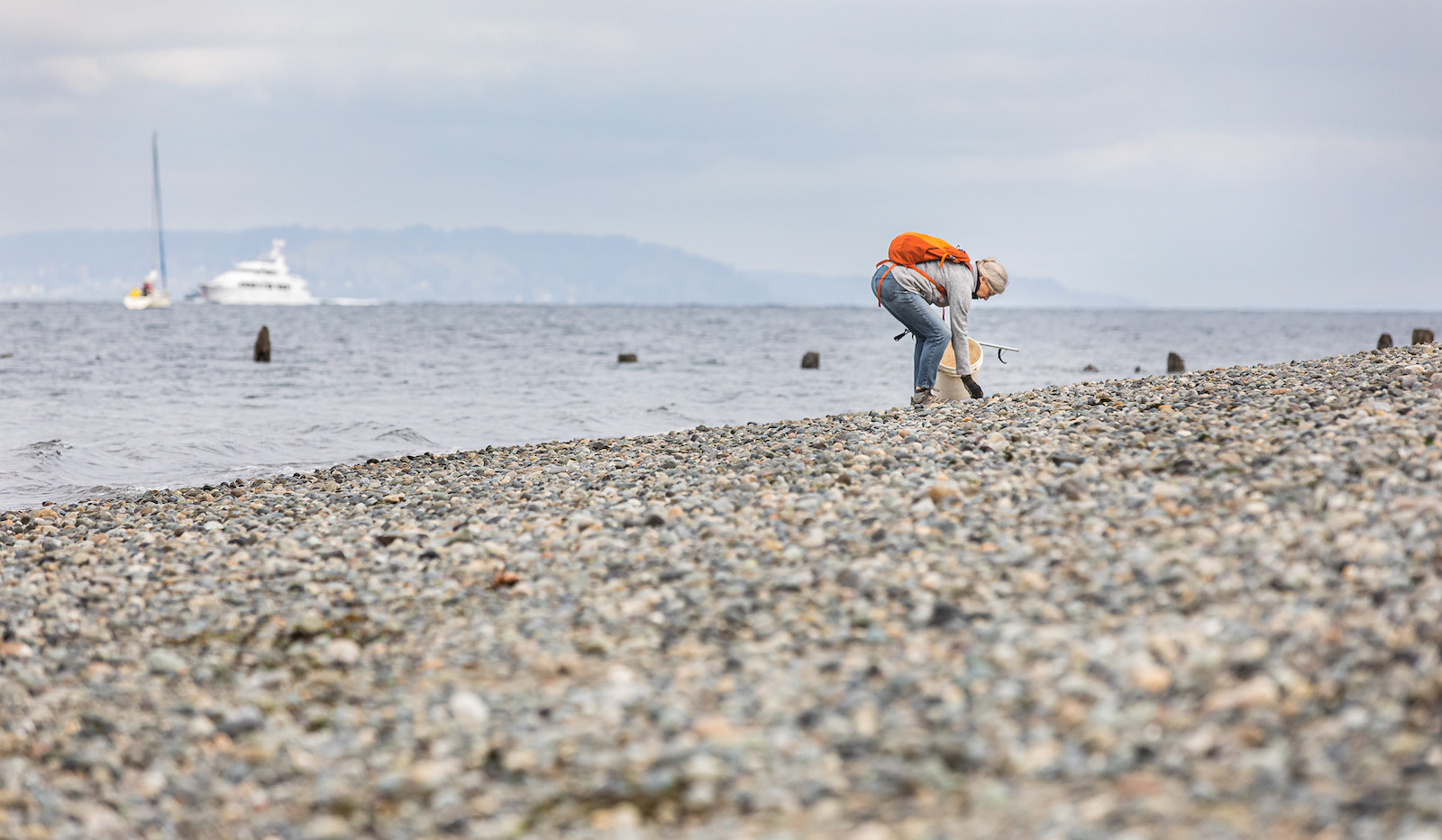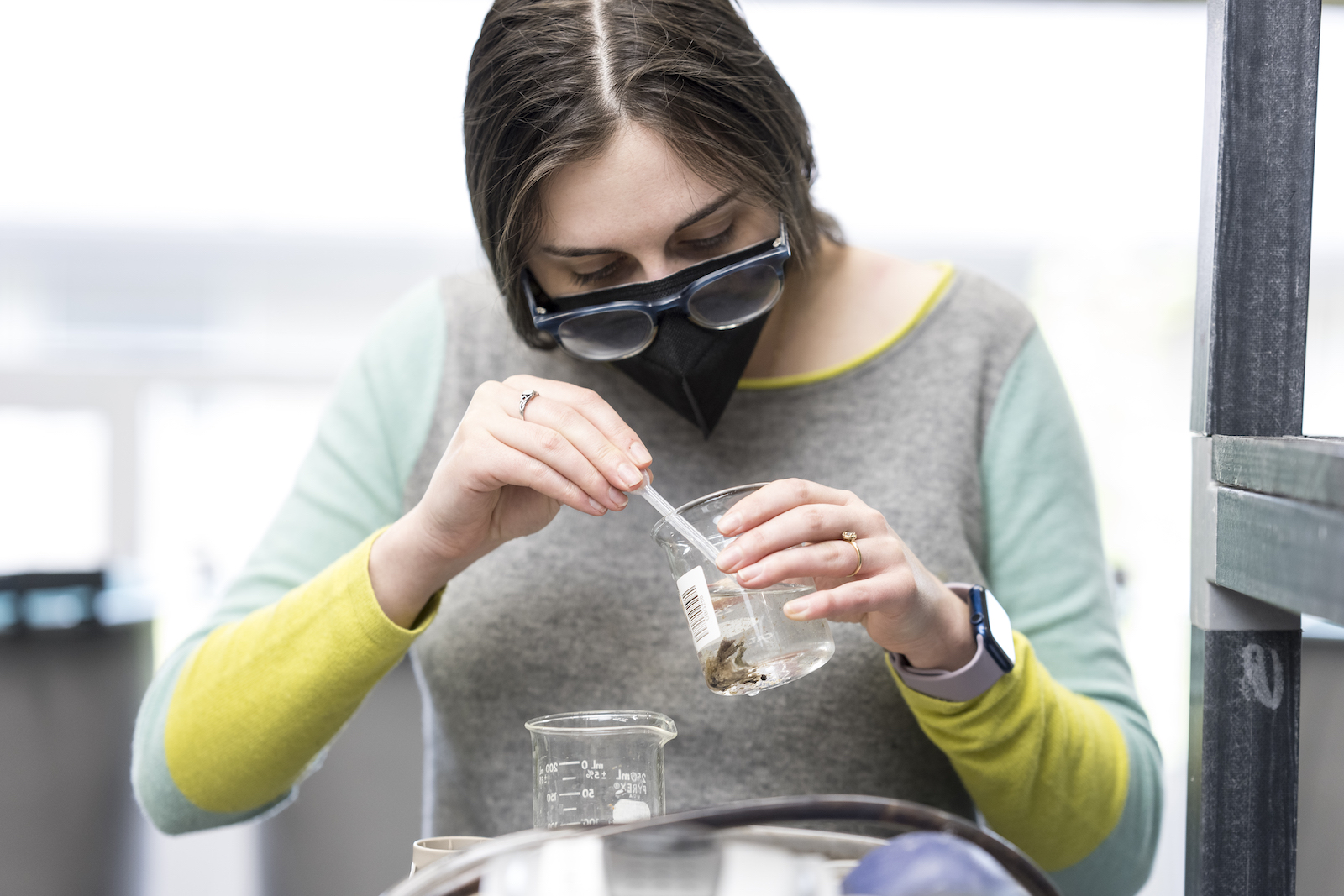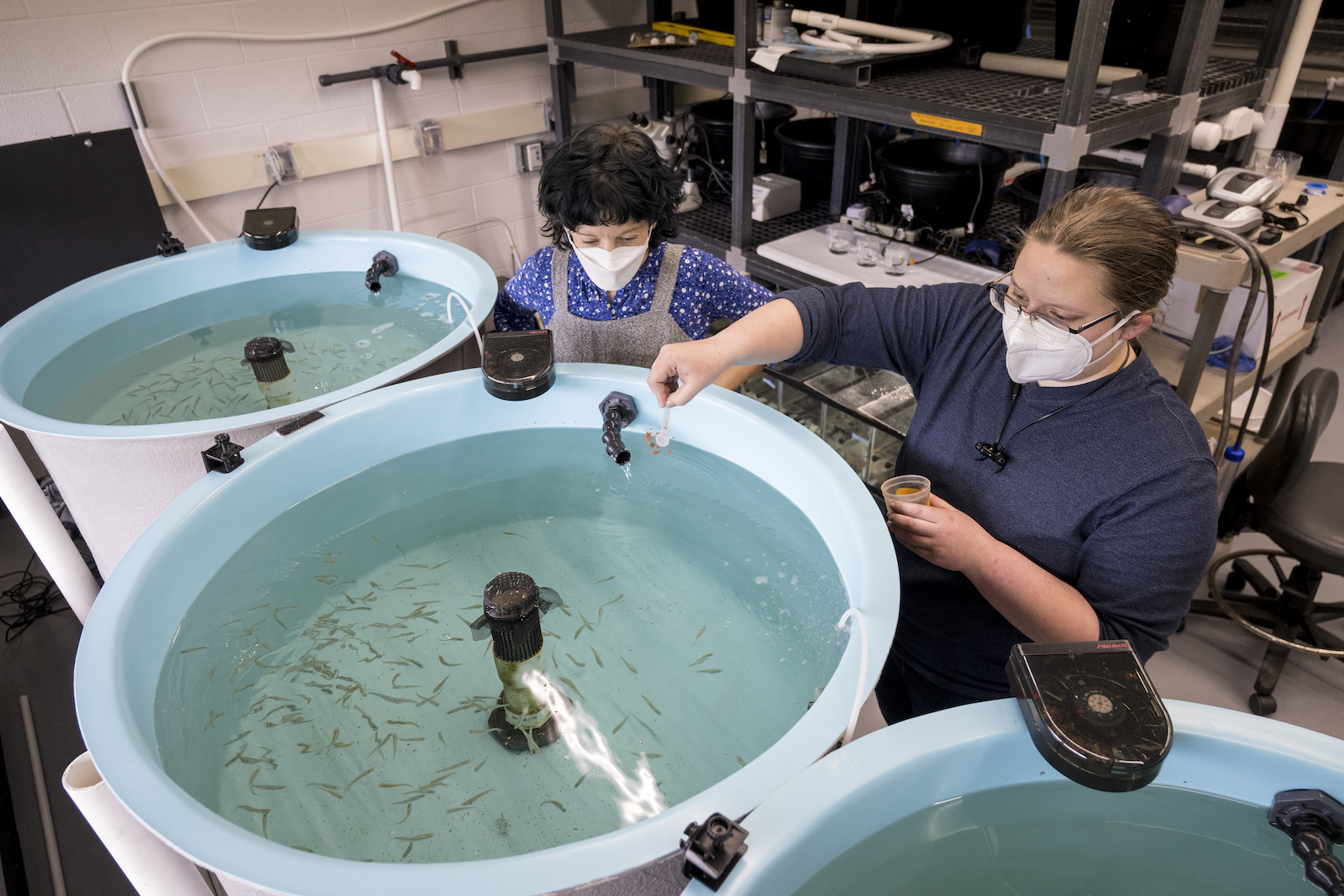This story was published in partnership with InvestigateWest.
On an overcast Saturday in Seattle, a group of volunteers combs a small section of the beach at Golden Gardens Park for trash. With 5-gallon buckets in hand, they slowly fan out and search a roughly rectangular zone marked by cones, passing over the same spots several times from the grass to the waterline as they look for even the tiniest things that don’t belong there.
Unlike several other Earth Day weekend cleanups going on farther down the beach, this group has been given special instructions that will help them categorize and log everything they find, from food scraps and toys to tiny pieces of foil and, of course, many types of plastic.
From large pieces, such as bottles, cups, and even a Smurf action figure, to tiny microplastics — fragments, films, fibers, or foams less than 5 mm long — plastic is one of the most common pollutants this group will find, mirroring what cleanup crews regularly see across the country.
Recently, international attention has homed in on the problem, which is only growing worse as plastic doesn’t decompose but degrades into smaller pieces that will remain in the environment for thousands of years. Single-use plastics will be phased out of national parks by 2032 after an announcement in June from the Biden administration, and by the end of 2024, the United Nations plans to have a legally binding plan to end plastic pollution globally.
But groups like this cleanup crew are helping answer a more basic question: Where is this stuff coming from?
These volunteers are following the “Escaped Trash Assessment Protocol,” which was developed in Washington state from 2018 to 2021 and is now being used by volunteer groups around the country with guidance from the Environmental Protection Agency. The idea is to provide standardized data to state and local regulators so they can better attack sources of pollution.
“We’re doing the same thing at different sites all around the state to see: what does litter look like here versus near a highway versus an alley versus another beach?” explains Heather Trim, executive director of Zero Waste Washington, an organization that helped develop the protocol. Using geographic pins on her phone, she marks the location of the cones around the perimeter of the cleanup area, which will enable her to map it later. “The data they’re going to collect is going to be apples to apples” between the sites.

Even though the City of Seattle already cleaned this beach of large debris hours before people started arriving at the popular park, the 20 or so volunteers working with Puget Soundkeeper end up filling buckets with trash.
Volunteers Valerie Chu and David Corrado sit on the grass to sort the material into trays after helping gather litter from the beach. Other volunteers take the trays to tables set up under a canopy to be divided even more specifically into plastic containers with detailed labels.
Is the trash from camping? Is it from fishing gear? Is it a household item? Is it dog waste? There’s a quart-sized container for basically any item you could find, with dozens of possible categories. Some of the youngest volunteers then help count the number of items in each container, weigh the trash from that category, and dictate their findings to the recordkeeper.
As expected, plastic is one of the most common substances across the categories.
Chu, who works in toxicology in the Seattle area and regularly volunteers with Puget Soundkeeper, says she’s keenly aware of the issues plastic can pose in the environment.
“When it comes to microplastics, a lot of times contaminants [attach] onto these microfibers from clothing,” Chu explains. “When it comes to all those contaminants, there’s very little research to show what makes things more toxic.”
Essentially, chemicals that already pollute the environment, such as PCBs, or polychlorinated biphenyls, and flame retardants, can glom onto the plastic and convert into other more toxic substances, she says. But little is known about the impacts those combinations may have on people, wildlife, and the environment.
While the fibers the volunteers find on the beach are mostly too large to be categorized as microplastics, some of these materials could ultimately break down to that size.
And although groups like this conduct cleanups around the country every day, they are starting to direct their attention away from the end life of plastic to focus on the beginning. If anything is going to change, they say, plastic production and packaging choices around the world need to shift.
“It would be good for more people to know about the beginning of life of plastic and the role that these large corporations have in it,” says Gillian Flippo, the stewardship coordinator for Puget Soundkeeper, who helps run cleanups and citizen science projects throughout the year. “This data will be going toward larger scale change, the bigger picture, and hopefully that’ll potentially inform some policy.”
People should be focusing on “turning off this plastic tap,” she says.
The reality of how pervasive plastic pollution has become around the world is staggering.
Whether testing guts or muscle tissue in the lab from a fish, a crustacean, a mammal, or a person, scientists have found plastic inside essentially all living things.
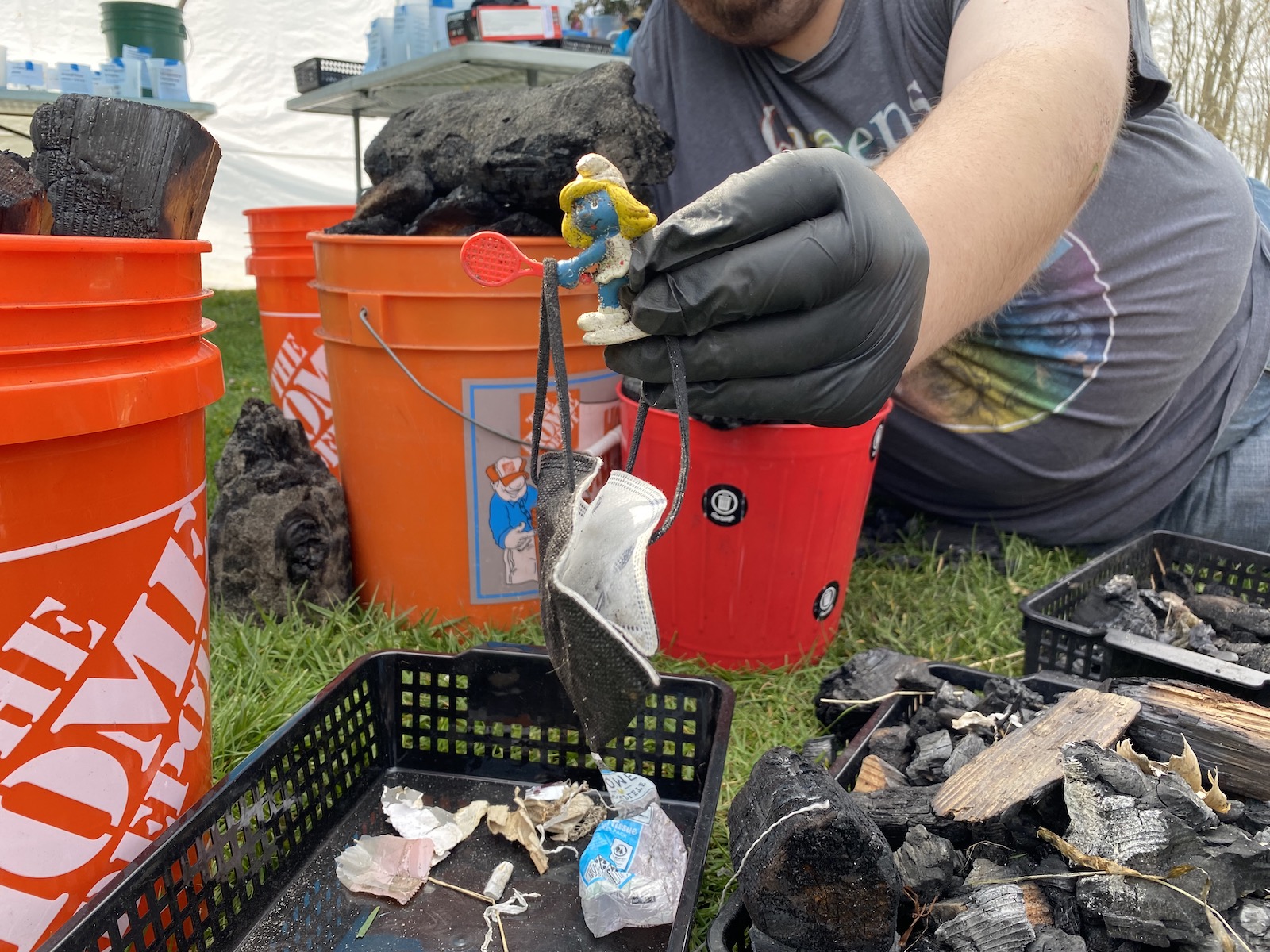
Plastic pollution has been found even in the most pristine areas, including the deepest part of the ocean and the most isolated mountaintops.
Marine debris and plastic bags found along rivers are visible reminders that plastic is in the waters we rely on, but it’s also most likely coming out of your water tap at home. Highway litter is an obvious sign the land is contaminated with plastic, and now ice and snow samples at remote locations on the planet, including in the Arctic, have been shown to contain plastic, suggesting it’s traveling through the very air we breathe.
As researchers and citizen scientists point out, this isn’t just a problem created by plastic straws and beverage bottles. It’s not just single-use plastic bags, or plastic cutlery, or the increasing amount of plastic film being used to keep our fruits, vegetables, and other foods fresh.
Microplastics have been found in beer, honey, broccoli, meat, fish — people and living creatures everywhere are unavoidably consuming the stuff.
But panic campaigns on foods to avoid would be ineffective.
“What we’re trying to understand is, where is the plastic coming from?” says Professor Elise Granek, an expert in coastal marine ecology at Portland State University, who leads the Applied Coastal Ecology lab there. “Without a handle on where it’s coming from, it’s really hard to make recommendations for management and policy.”
Luckily, with a rising interest in microplastics research over the last decade, scientists are starting to understand the sources and what can be done to stop them.
Granek (along with colleagues at other universities and her students) has helped advance our understanding of plastic pollution.
In a project with Oregon Public Broadcasting, one of her students helped the public radio station sample rivers around the Portland area, including tests near their headwaters in fairly remote areas. They tested sites on the Willamette, Rogue, and Deschutes rivers.
“We found microplastics everywhere,” Granek says.
The amount of plastic found was lowest in the most remote areas and higher near urban centers.
“It makes sense that there was a correlation with population density, but nowhere was pristine,” Granek says.
Plenty of research has focused on the microplastics found in the guts of fish and seafood, to better understand how that may be taken up through their digestion process. But in another project, Granek and others looked at fillets from common fish found at markets. Microplastics were found in the tissue that people actually eat, she says.
“What’s happening is, we actually find fairly long fibers even in the muscle tissue of the organisms,” Granek says. “Those long fibers are very, very thin, on the order of 20 microns in width, but they can be a millimeter in length.”
But that doesn’t mean she wants to dissuade people from eating seafood, which is a great source of healthy protein.
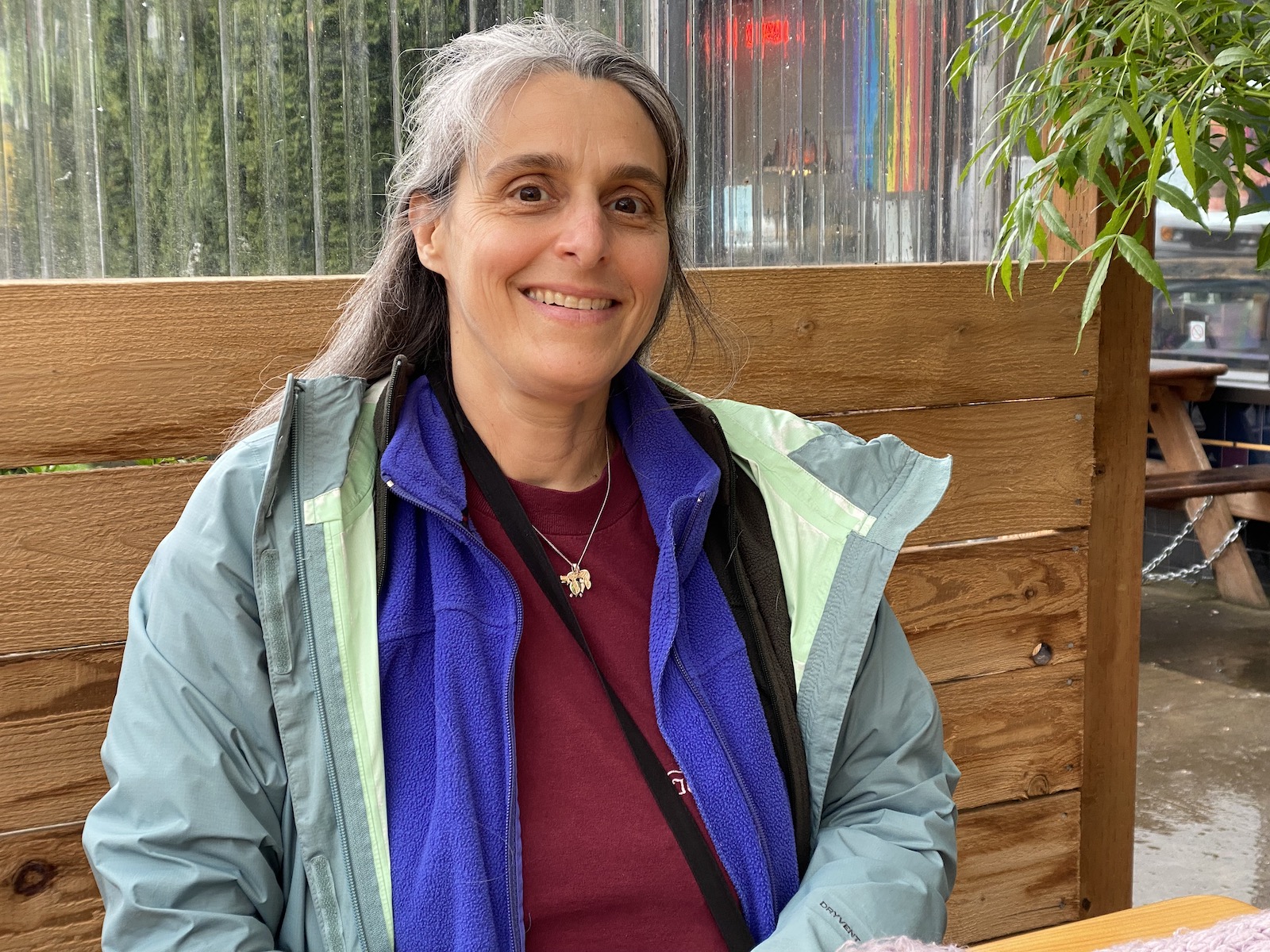
“It’s not like you should avoid this, because you’re getting [microplastics] from other sources,” as well, Granek says.
This summer, her lab will use a grid system to study parts of Portland. By looking for tiny plastics deposited in moss, which is abundant throughout the city, they’ll try to get a sense of some of the hot spots for plastic pollution.
Plastic particles that wear off tires are one of the most common sources of that pollution. So, the researchers expect highways and freeways to be a big source.
“We think the recycling center in north Portland is probably a source, because some gets dropped or weathered,” Granek says. “We know a number of studies have found dryer vents release microfibers … so we’re wondering if laundry facilities are higher sources.”
The most common type of microplastic found anywhere is the microfiber. They commonly shed off of plastic clothing such as polyester and nylon during the wash cycle, and while wastewater treatment plants may capture about 90 percent of those fibers, about 10 percent still escape into effluent. Even more of those microfibers may end up in the environment if biosolids captured at the treatment plant are used in agricultural fertilizing practices.
Those same microfibers are also released into the air through dryer vents. Using dryers at residential homes in Idaho and Vermont, researchers took bright pink blankets, got them wet and placed them in the dryer on low for an hour. They found the hot pink fibers in surface snow samples up to 30 feet away from the vents, with more than a thousand fibers found in some of the test spots.
Think about what that means for how many microfibers Portland or Seattle put out into the environment, Granek says. There are likely millions released into the environment every single day.
One solution governments are considering is requiring special filters on dryers to capture most of those microfibers at the source. Though the fibers may end up in landfills when those filters are disposed of and replaced, at least they won’t be released into the air.
About two-and-a-half hours southwest of Portland, other groundbreaking microplastics research is underway at Oregon State University’s Hatfield Marine Science Center, located in Newport on the Oregon Coast.
In early May, Associate Professor Susanne Brander walks through the university’s brand new microplastics lab completed during the pandemic. Brander teaches in the Fisheries, Wildlife, and Conservation Sciences and Environmental and Molecular Toxicology departments, and helps mentor students whose work touches on plastic research in diverse ways.
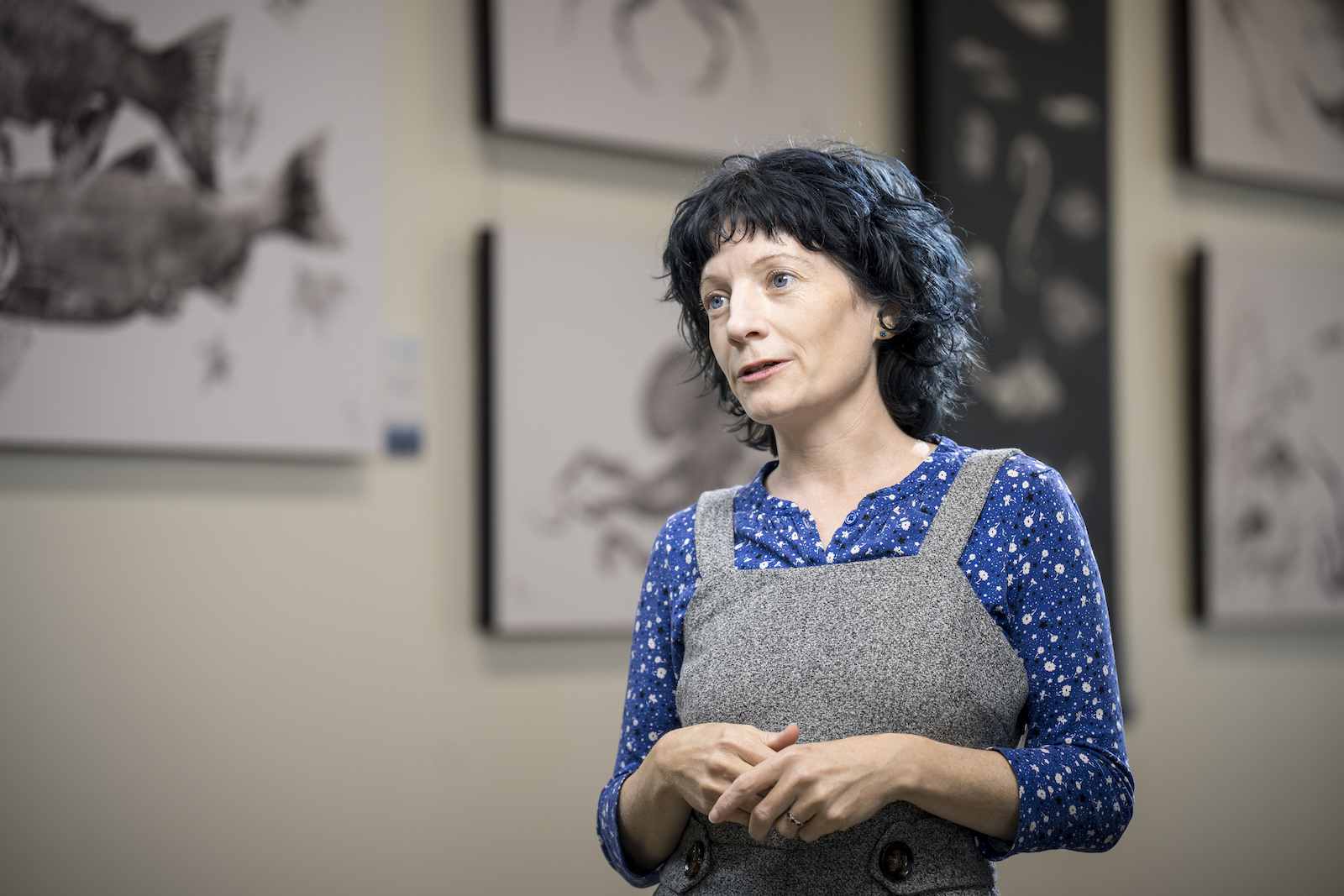
With her for this May tour is a team of graduate students who will spend this summer researching microplastics in tiny shrimp, bioluminescent fish, animal waste, and more.
The team collaborates with government agencies and universities around the country, as they have a special piece of equipment to identify the type of plastic each tiny particle is made of.
While many labs have had Fourier-transform infrared spectroscopy machines for years, this lab has a micro-FTIR that can analyze micro- and nanoplastics mere microns in length. (A micron is just 1/25,000 of an inch, or one-millionth of a meter.)
In the lab’s clean room, where special hoods and HEPA filters keep the area clear of as many background contaminants as possible, lab technician Emily Pedersen puts a plastic sample under what looks like a microscope. The micro-FTIR passes infrared radiation through the particles and takes several scans as a computer creates a wavelength showing how much light was absorbed or reflected.
“It reads the wavelengths that are coming back and compares it to a known library,” Pedersen says, noting that many labs helped create the library by scanning known substances into the system. “So, that’s just polyethylene terephthalate, which is a regular water bottle or packaging.”
For this demonstration, she already knew the material came from a water bottle, but when the team is running tests on various microplastics found in animal samples, the machine is key to understanding what’s there. It also helps sort out natural fibers and organic material from man-made substances.
“If you’re pulling a bunch of different fibers from a fish gut, it’s really hard to tell if they’re synthetic or not unless you chemically analyze them,” Brander says.
On the left, Sara Hutton, a third-year doctoral candidate at Oregon State University, transfers tiny mysid shrimp into a container to show how their behavior can be studied in the lab. On the right, in the Hatfield Marine Science Center in Newport, Oregon, a research team raises fish to study the effects of microplastic exposure. Karl Maasdam / InvestigateWest
Brander notes that in the freezer they have samples of otter scat from Alaska they’ve been asked to test. Another student at the school has sand dune core samples waiting to be tested. Granek may send samples here as well.
In another lab on the satellite campus, first-year graduate student Olivia Boisen shows off frozen samples of myctophids that she plans to test. Also known as lanternfish, the small creatures serve as a major food source for other fish, and they are commonly picked up by accident when research teams are out collecting salmon and other sea creatures for testing.
As she holds up a jar of the sardine-sized fish, they flash silver as the light catches the organs that enable them to bioluminesce deep underwater. While they spend their days about a kilometer deep, at night they rise close to the surface to eat, Boisen says.
“This huge number of fish are doing this every night, and then they migrate back down to live out their days down there,” Boisen says. “So they’re probably this microplastic pump from the surface to midwater, which is really important to study.”
Because of their unique abundance, and the fact that many museums have preserved lanternfish in jars of ethanol over several decades, Boisen will get to see if she can track the rise in plastic production and pollution over time.
The first fully synthetic plastic was bakelite, which was first made in 1907 and soon grew popular for making phones, radios, car parts and jewelry. But it wasn’t until the 1950s and ’60s that plastic production started to take off. In recent years, production has continued to grow on an exponential scale, as the cheap material is used in more products than ever before.
Boisen theorizes that she may be able to see lower levels of plastics in the myctophids captured and preserved in the 1960s compared to those caught fresh for her this year. Those caught this year were preserved using far stricter quality control measures to avoid contamination, yet they may still have higher levels of plastic in them.
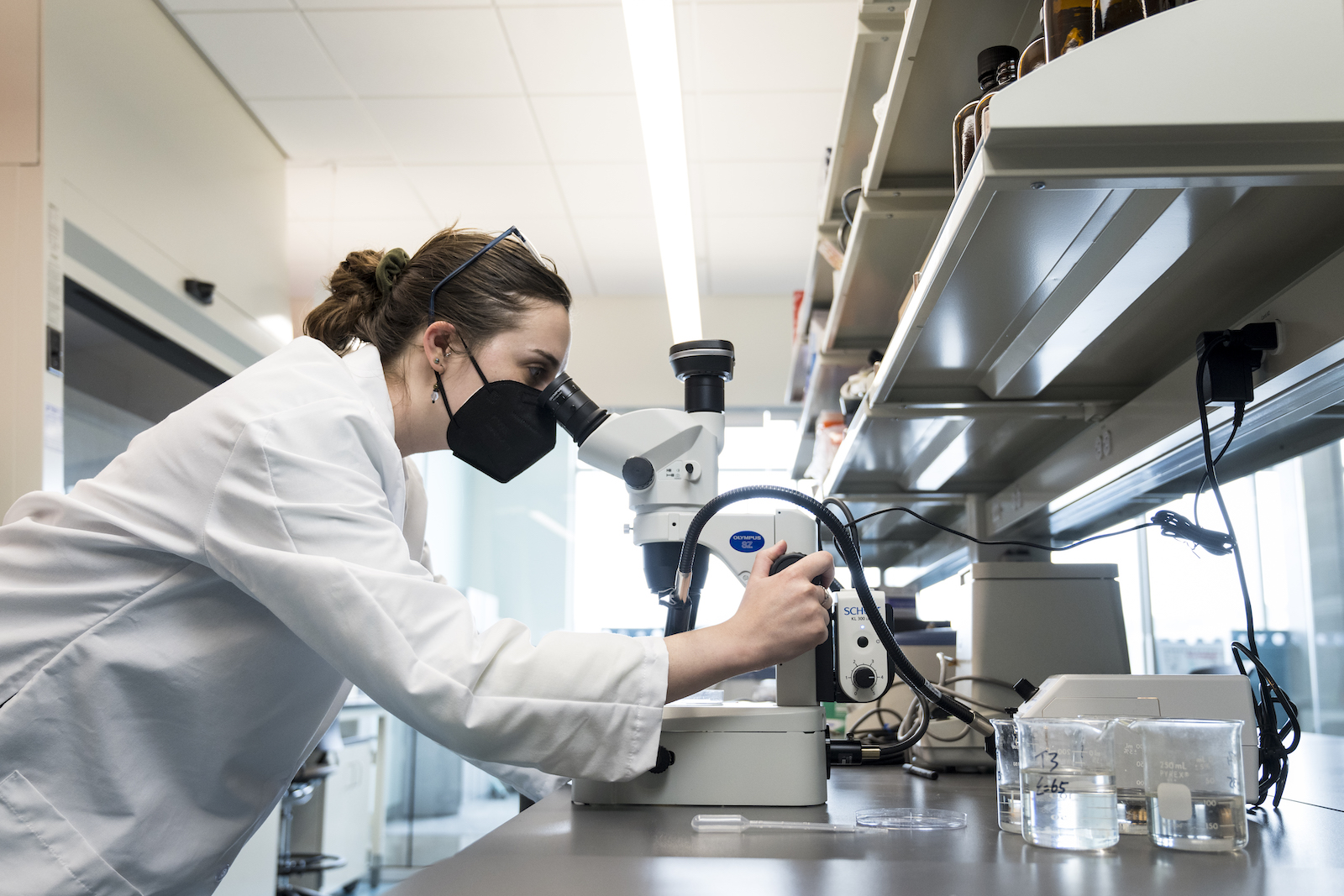
Also working with Brander are Sara Hutton, a third-year doctoral candidate, and Felix Biefel, a visiting doctoral student from Germany.
Hutton, who works in the Environmental and Molecular Toxicology Department at OSU, is studying gene expression in silverside fish that are being raised and exposed to microplastics in the lab.
Biefel is working with tiny mysid shrimp raised in the lab to study how their behavior is impacted after microplastic exposure. He’ll expose them to light and dark, as well as different temperatures.
“The nice thing about using behavior is it can be an indicator of neurotoxicity,” Hutton explains. “We’re interested in how it affects their brain. If the organism developed differently, it’s going to affect its behavior.”
Exposure experiments are essential to better understand what it means when researchers find microplastics in various species, Brander says.
“It’s great to go out and find microplastics,” Brander says. “But the only way to know if it’s dangerous is if we have lab experiments.”
Shortly before the pandemic, Brander helped co-found the Pacific Northwest Consortium on Plastics. With about 250 members, including people in research, at government agencies, at nonprofits and other organizations, a strong network now helps share information as more becomes clear about plastic pollution.
With so many people at different types of organizations, it may be easier to connect the dots as people start to talk about policy changes and potential solutions.
“[In] the microplastics field, I think we’re at the point where we know that things like textiles and tire particles are a bigger problem than we thought,” Brander says. “Even as recently as a few years ago, the focus was on straws and cups, and single-use products, which we know are still really problematic and things we find all over our beaches.”
But the plastics being found in sediments and organisms are often microfibers, she says.
“That gives us an idea,” she says, “of what sources we need to go after.”
Already, some states are targeting upstream sources such as packaging by requiring producers to pay for the end-life recycling of their products. Through what’s called extended producer responsibility, companies that choose to sell their product in, say, plastic bottles, would have to pay for the collection and recycling of those bottles in some places that have already passed such a policy. On June 30 of this year, California took a giant step in that direction, passing what’s considered the strongest law in the nation to phase out single-use plastics and packaging waste.
Similarly, the data from the citizen science of the “Escaped Trash Assessment Protocol” may guide decision-making.
The protocol was developed after Margaret McCauley, the Trash-Free Waters coordinator for the EPA’s Pacific Northwest region, and a colleague realized the information so many groups voluntarily submitted to them wasn’t comparable.
“We both were looking at the data that people were collecting and attempting to share with us under the Clean Water Act and [Resource Conservation and Recovery Act],” McCauley says. “It was lots of smart people doing lots of things that didn’t connect with each other.”
Some groups might count individual cigarette butts, while others might simply report the number of trash bags. But how big were the trash bags? And how does a wet pair of jeans compare to a single cigarette butt, McCauley asks.
The protocol (which got its wordier name due to disagreements over the term “litter”) enables standardized measurements that can then be used by those in power to enforce things like stormwater permits, McCauley says.
Permits and other legally binding mechanisms can apply pressure to reduce pollution. The pricier the cleanup, the better the likelihood people will look to upstream solutions.
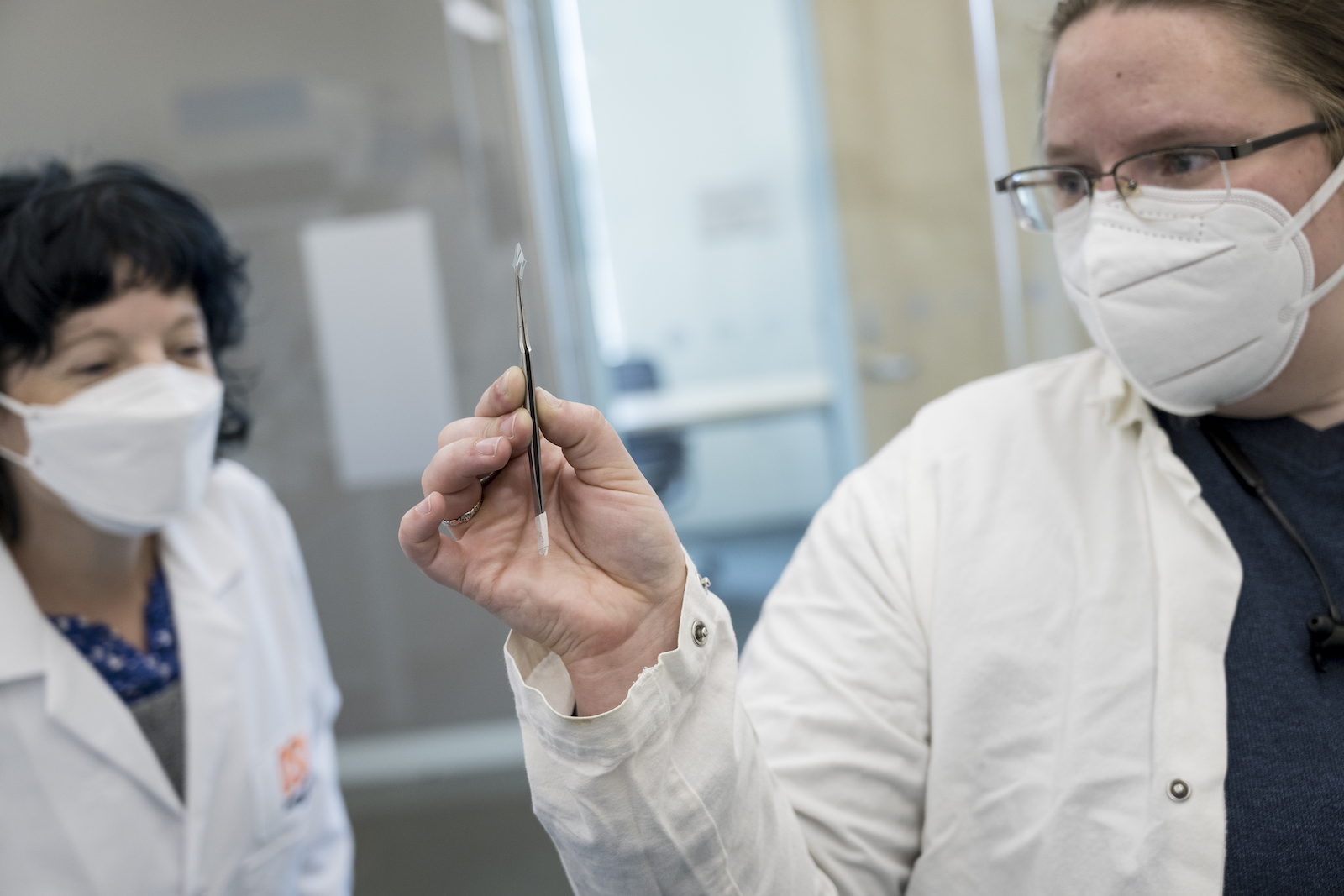
Granek, the Portland State researcher, says to truly address the issue, the focus cannot remain on consumer habits and a bottom-up approach. Instead, she says a top-down focus is likely needed, with policies directed at those creating plastics in the first place.
“I think one of the things we’re realizing is that we can all do a better job of our household practices, but really the need for upstream changes is really important,” Granek says.
People may choose to buy fewer fast-fashion clothing items made largely from plastic, for instance, but the real impact will come from the top, she says.
Less than 10 percent of plastic that goes into recycling bins worldwide is recycled.
“Some industries will take voluntary action and that’s important,” Brander says. “Some individuals will take voluntary action and that’s important. But I think there also has to be regulation.”
Whether it’s requiring special dryer filters or redesigning tires, it’s possible to address some of the sources directly.
And addressing plastic is important, because even though the science may still be out on whether all that plastic negatively impacts human health, we already know it impacts animals, causing cell damage and affecting reproduction and growth, she says.
“It is in our bodies,” Granek says. “There are enough studies that do find effects on animals that it would be a little surprising if animals were affected, but humans weren’t.”
InvestigateWest (invw.org) is an independent news nonprofit dedicated to investigative journalism in the Pacific Northwest. Visit invw.org/newsletters to sign up for weekly updates. This story was made possible with support from the Sustainable Path Foundation.

